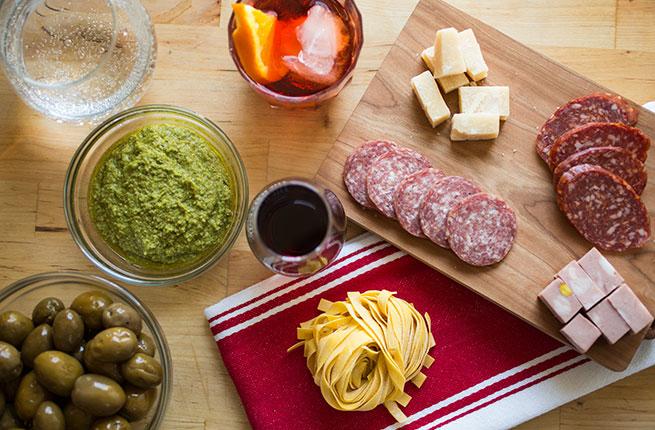
One of the great joys of traveling the world is experiencing new culinary traditions, but we often fail to take these traditions home with us. That shouldn’t be the case, though, because it’s easier than you think to integrate food and drink from abroad into your daily routine.
With that in mind, let’s turn our attention to one of the greatest countries in the world for gastronomes: Italy. Given the country’s outsize influence on what Americans eat—pizza and pasta, anyone?—it’s interesting to observe that how Americans eat bears little resemblance to Italian customs. No matter: this is an easy problem to fix. We’ve rounded up a few of our favorite Italian traditions and recipes to share, the ones we couldn’t leave behind after getting a taste of la dolce vita. Curious to know how you, too, can eat and drink like an Italian? Read on to discover five hassle-free ways to do exactly that every day. If you’re feeling ambitious, you could even follow these tips to plan a chic, simple dinner party at home.
Water and Soft Drinks
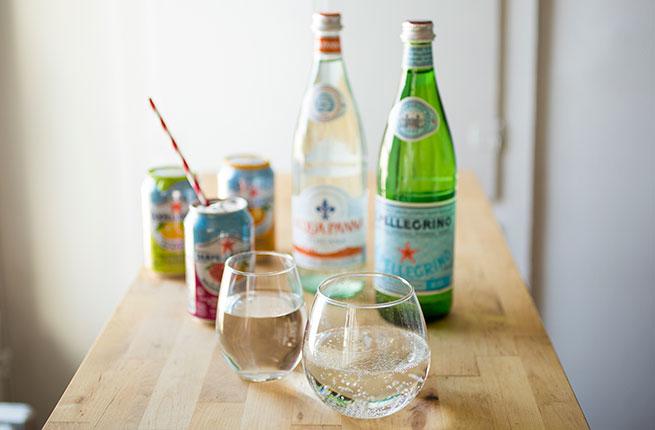
There isn’t a single thing Italians eat or drink that isn’t carefully considered, and that level of detail extends to nonalcoholic beverages. If you’ve dined out in Italy, you’ve no doubt noticed that water—still or sparkling—comes in bottles, not in pitchers filled with tap water. There are a couple of reasons for this: the water simply tastes good, and its quality and integrity are guaranteed. Both Acqua Panna Natural Spring Water, which comes from the hills of Tuscany, and S.Pellegrino Sparkling Natural Mineral Water, which is sourced from the Italian Alps, are trusted brands that are widely consumed by Italians and easy to find in the United States. Both waters are suitable for drinking any time of day, but they play an important role at mealtimes.
Recommended Fodor’s Video
In a process known as “harmonizing,” the appropriate water is selected based on the wine and/or food it will be served with. In this case, the lighter flavor and subtle aroma of Acqua Panna pairs well with fresh, fruity white wines; light rosé wines, sweet sparkling wines, seafood dishes; and any pasta with a relatively light sauce. The more aggressive character of S.Pellegrino, however, pairs best with full-bodied wines with high levels of tannins and acidity, as well as dishes that are particularly spicy, sweet, or heavy. Just as you would pair wine with food, Italians pair the correct water with wine and food to ensure that the water does compete with or overwhelm any other flavors.
When it comes to soft drinks, Italians don’t consume drinks laden with corn syrup, sweeteners, or artificial ingredients. Some of the most popular nonalcoholic drinks come from the Sanpellegrino Sparkling Fruit Beverages line, with just a handful of natural ingredients, including juice harvested from the citrus trees of Sicily, the source of some of Italy’s finest produce.
Aperitivo
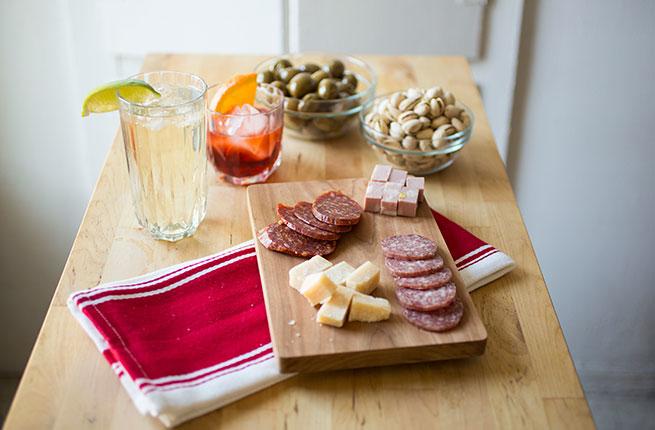
Perhaps the best part of an Italian’s day is the tradition of aperitivo (from the Latin word meaning “to open”), which is sort of like American happy hour but has nothing to do with greasy bar food and cheap drinks. Instead, aperitivo, which is both the name of the ritual as well as the type of drink an Italian might have at that time, is meant to whet one’s appetite, to “open the stomach” for dinner. Whereas American happy hour tends to focus on overindulgence, aperitivo is all about restraint: You’ll never see an Italian getting drunk before dinner.
To recreate aperitivo at home, all you need are a few quality snacks. Upscale Italian bars may serve more complicated options, but it’s quite typical in northern Italy to receive a bowl of olives and some potato chips with your afternoon drink. Other options include nuts, salumi, and cheese—all very simple, nothing that requires too much prep work. For drinks, the Negroni (equal parts Campari, gin, and sweet vermouth) and Aperol Spritz (two parts Aperol, three parts Prosecco, and a splash of soda) are classic options, but a glass of wine is equally acceptable. Although the hazelnut liquer Frangelico is often considered an after-dinner drink, it makes a fine (and unique) aperitivo when topped with soda and garnished with a lime wedge.
There are three excellent books that provide more information about the aperitivo tradition. Marisa Huff’s forthcoming Aperitivo: The Cocktail Culture of Italy is filled with dazzling photos and recipes; she focuses both on drinks and food, with chapters on Turin, Portfino and the Ligurian Coast, Milan, Florence, Padua, Rome, and Venice. The Negroni may be one of the easiest cocktails to make, but The Negroni features more than 60 recipes for variations of the drink. Similarly, Spritz (with an irresistibly attractive cover) celebrates the revival of Venice’s favorite beverage and features dozens of recipes for drinks and easy-to-make aperitivo bites.
Fresh Pasta
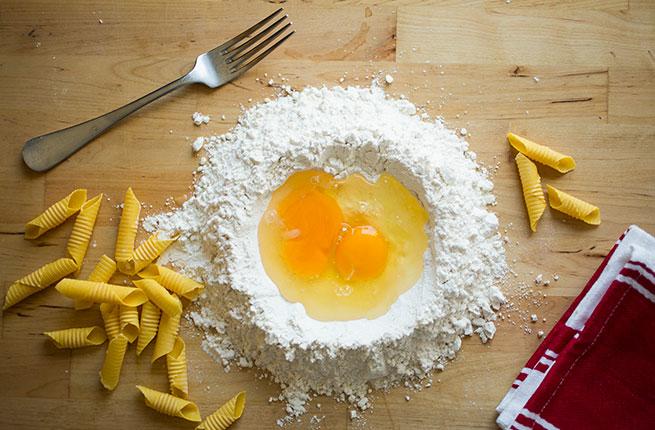 `
`
It’s no secret that Italians make great pasta, but there’s nothing preventing you from replicating that greatness in your own kitchen. All you need to make fresh pasta is flour, eggs, and salt. Your mileage will vary depending on the type of flour you’re using—so-called 00, or doppio zero, flour is best—but those three ingredients are the building blocks and, when combined, will make pasta, so don’t be ashamed of using all-purpose flour if necessary. You’ll find countless recipes for fresh pasta online, each with different measurements—just make sure the type of flour you use matches the recipe.
Now, if you want to feel like a true Italian nonna, place the combined flour and the salt on a clean countertop and create a well in the center with your fingers before adding the eggs to the well. Mix the eggs with a fork to combine, then slowly start incorporating the flour little by little until it comes together. (This is a messy process, but it’s authentic.) Once you have a ball of dough, you’ll have to knead it by hand for about 10 minutes and then let it rest, covered in plastic wrap, for another 20–30 minutes. If you have a food processor or a stand mixer, you can throw all the ingredients in there and let the machine take care of the mixing and kneading, though you still have to let the pasta rest in order to let the dough develop its gluten network.
Once the dough has rested long enough, it’s time to turn it into pasta. The low-tech method calls for only a rolling pin and a knife: cut the dough into quarters, roll each quarter out until it’s very thin, and then cut strands of tagliatelle, pappardelle, or any other flat pasta. Most home cooks would advocate using a pasta roller to simplify the process, but it’s probably only worth investing in one if you plan to use it often. Either way, once the pasta has been cut, it can be cooked immediately (just a couple of minutes), hang-dried and then stored in an airtight container for a couple of weeks, or frozen for later use. From start to finish, you can have delectable fresh pasta in less than an hour, and the more frequently you make it, the better your technique will become.
Fast and Easy Pasta Sauces
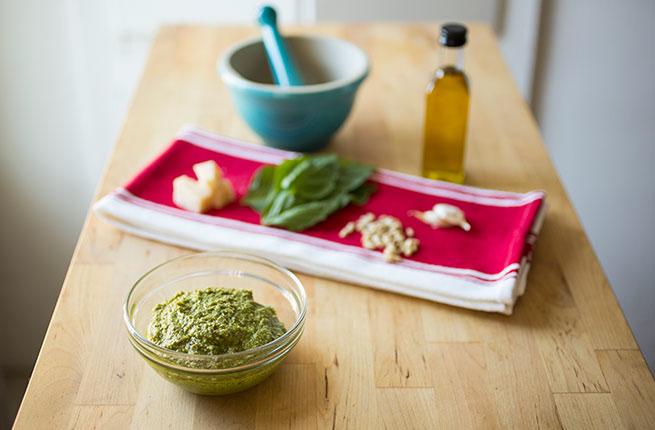
If you make your own pasta, you have to make your own sauce. Fortunately, you don’t need to stir a pot for hours to accomplish this. If you’re a minimalist, you can simply combine the pasta with butter, black pepper, freshly grated Parmigiano-Reggiano, and some of the starchy water the pasta was cooked in; if you wish, you can also add freshly grated nutmeg. This simple preparation will allow you to fully enjoy the flavor and texture of the pasta.
The traditional method for making pesto calls for a mortar and pestle, but you can whip up a batch in a food processor in just a few minutes. The standard recipe calls for combining, basil, pine nuts, olive oil, garlic, and a cheese called Pecorino Sardo, but you can substitute in any leafy herb or herb combination (parsley and sage, for example), any nut (almonds and walnuts work particularly well—and they’re cheaper than pine nuts), and any hard, sharp cheese, including Parmigiano-Reggiano. The texture of a machine-made pesto is certainly inferior to a handmade one, but the flavor is equally good.
Marcella Hazan’s tomato sauce is a model of simplicity, with only four ingredients: a 28-ounce can of whole peeled tomatoes (preferably San Marzano), one onion cut in half, five tablespoons of butter, and a pinch or two of salt, all simmered for about an hour. In the words of the Barefoot Contessa, “How easy is that?”
Digestivo
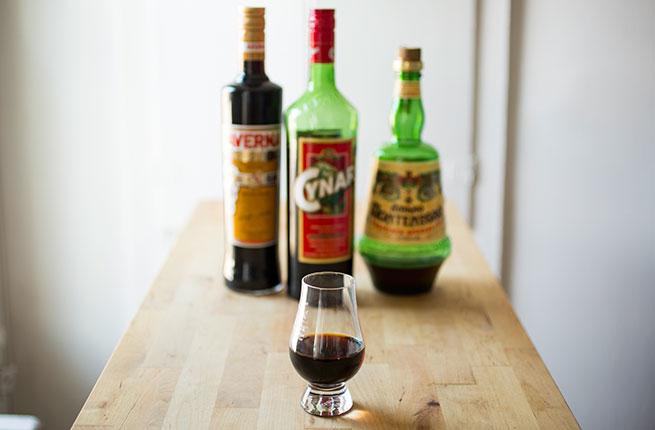
At the end of a long meal, after the dessert and espresso have been finished, it is customary for Italians to drink a digestivo, typically a type of herbal liqueur called amaro (amari when plural), which is believed to aid in digestion. Traditionally, amari are produced by infusing grape brandy with a blend of herbs, aromatics, and botanicals; the concoction will then be sweetened and aged, resulting in a bittersweet, syrupy liquid with an alcohol content ranging from 11 to 40 percent.
Gven this wide-ranging definition, Aperol and Campari are considered amari, but they would never be served at the end of a meal. For digestivo, Italians tend to stick to darker amari; popular options include Montenegro, from Bologna; Averna, distilled in Sicily; and Cynar, an artichoke-based amaro that is popular in cocktails but can also be served as a digestivo. Last year saw the release of Cynar 70, a 70-proof version of the amaro that’s even better at the end of a big meal.
What’s the best part about amari? All you have to do is open a bottle and pour out a small amount. It can be served neat or on the rocks, but if you’re serving a guest, you should pour it neat and offer ice on the side. After all, that’s what an Italian would do.


